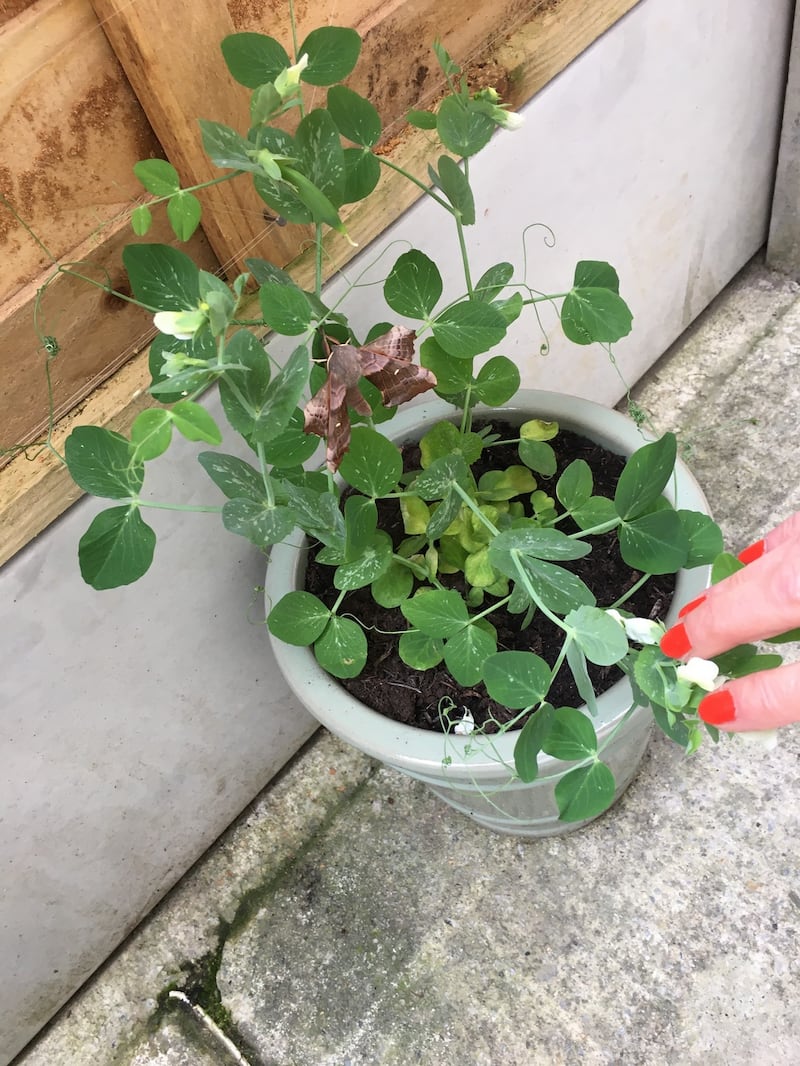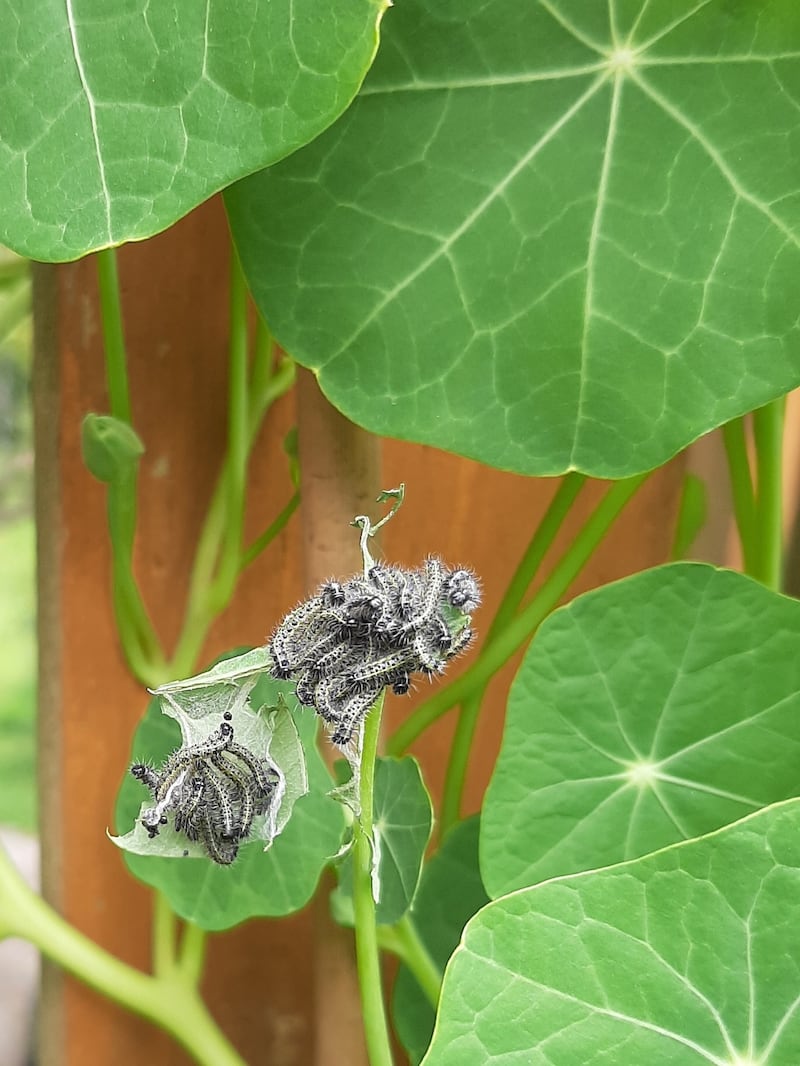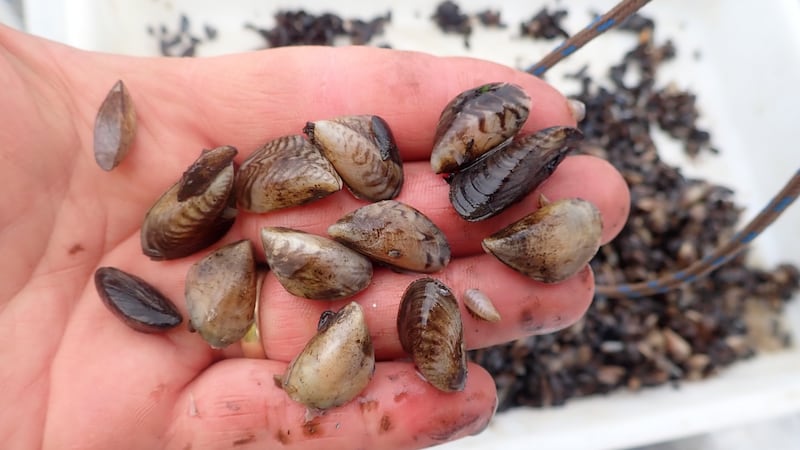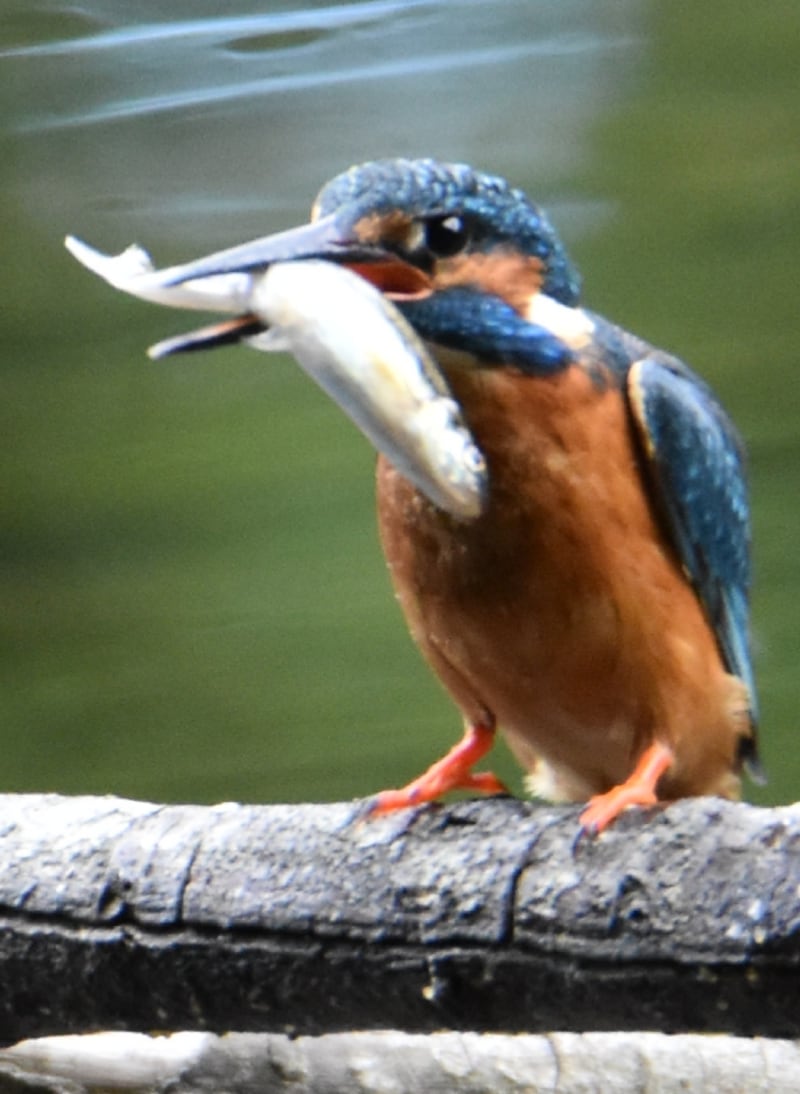I found this character in a spider’s web in my house. The best guess I can make is that it’s a hornet, but I don’t think the “face” looks waspy enough Eva O Donnell, Co Clare No indeed – the huge eyes and having only two wings (not four) mean that it is a fly. And not any old fly, but a large horsefly. The antennae are scimitar-shaped and the feet have three pads. This is a harmless poor male which feeds on nectar, but the female is a bloodsucker that can inflict painful bites on humans, cattle and horses.
This creature has been on this plant at a friend's house for three days. I thought it was a leaf. Mary Spillane, Nenagh, Co Tipperary

It is the poplar hawkmoth. At rest, with the hind wings projecting in front of the forewings, it does look like a cluster of dead leaves; successful camouflage.
These caterpillars were devouring my nasturtiums. What are they? Paul Aiken, Belfast

Caterpillars are eating machines, and these are of the large white butterfly. They also gobble the leaves of cabbages and other brassica plants.
Invasive Quagga mussel

Dan Minchin sent in this picture of the invasive Quagga mussel, originally from Ukraine, which was found in early July in large numbers in Lough Ree and downstream in the Shannon to Lough Derg. He warns that anyone moving boats from the Shannon should be aware that they could spread this species, which spreads even more aggressively than the Zebra Mussel.
My wife saw this flower on a recent visit home to Donegal and was wondering about an identification. Rab Cherry, by email It is the marsh cinquefoil whose sepals close after fertilisation.
Kingfisher at rest

The lovely picture this week is one of a kingfisher with its breakfast, taken by Marty McDonald on the way to work in Wicklow’s Druids Glen.
Have you a nature query, observation or photograph you would like to share with The Irish Times? Submit it, with location of the image, via our website irishtimes.com/eyeonnature











